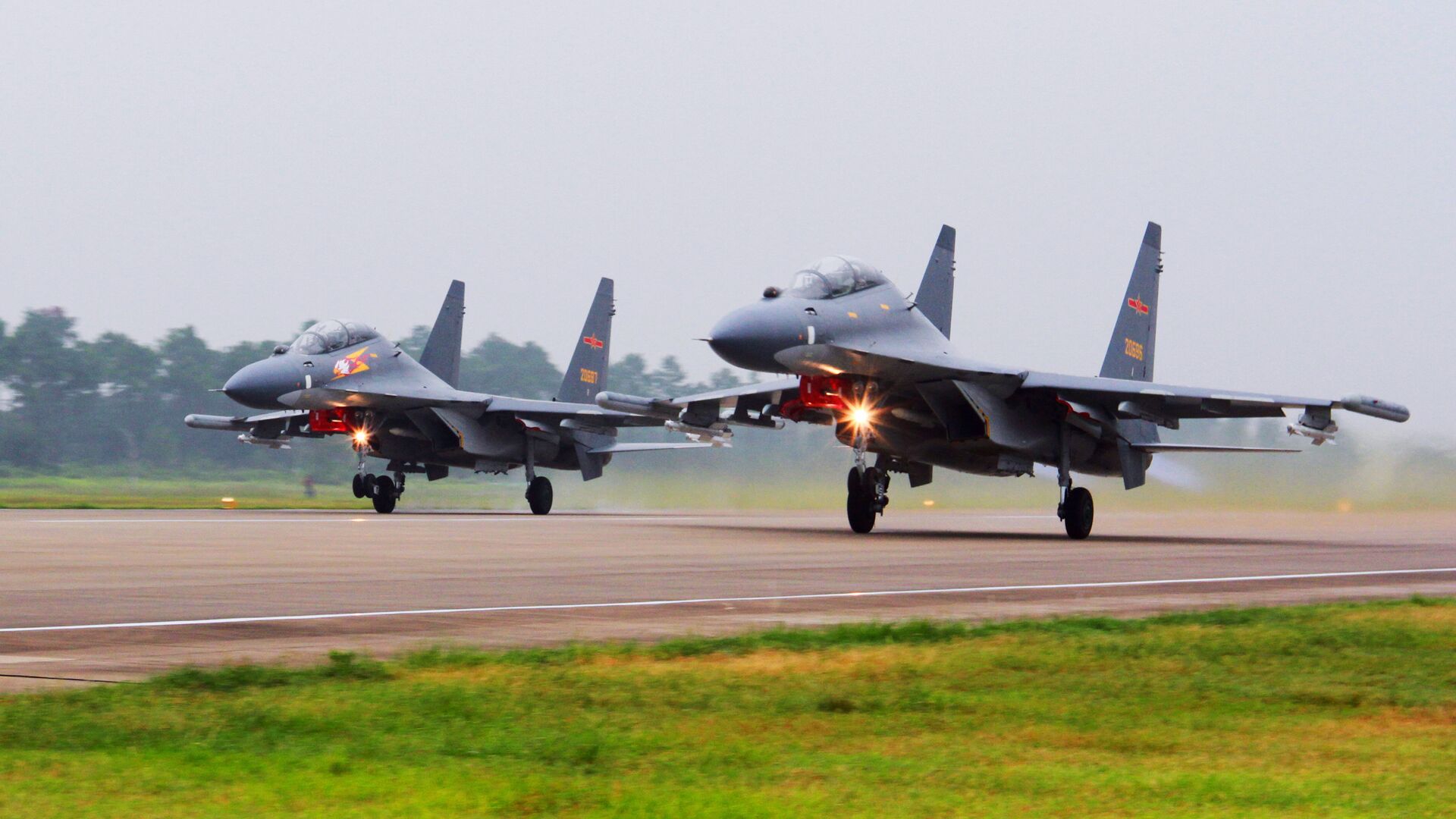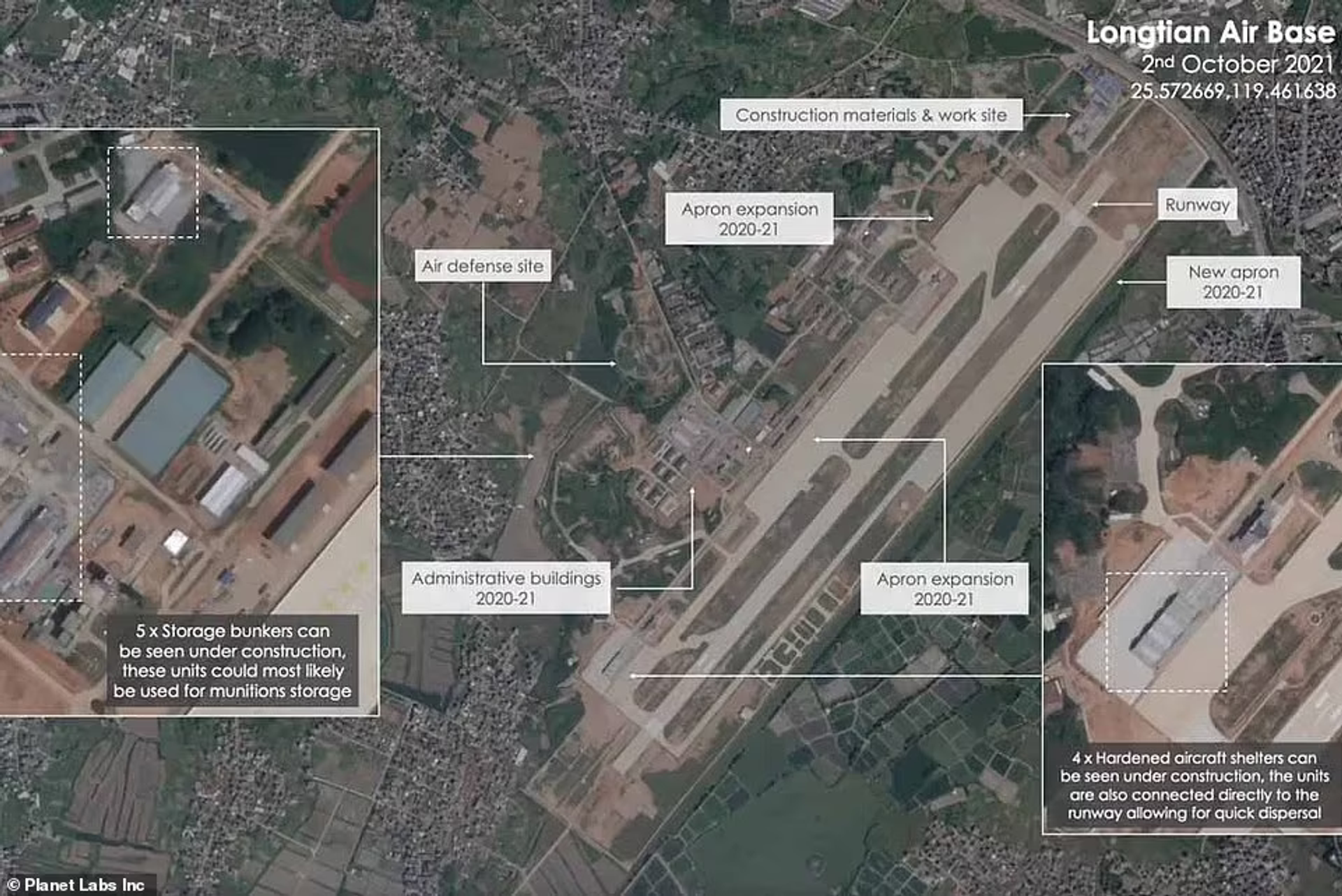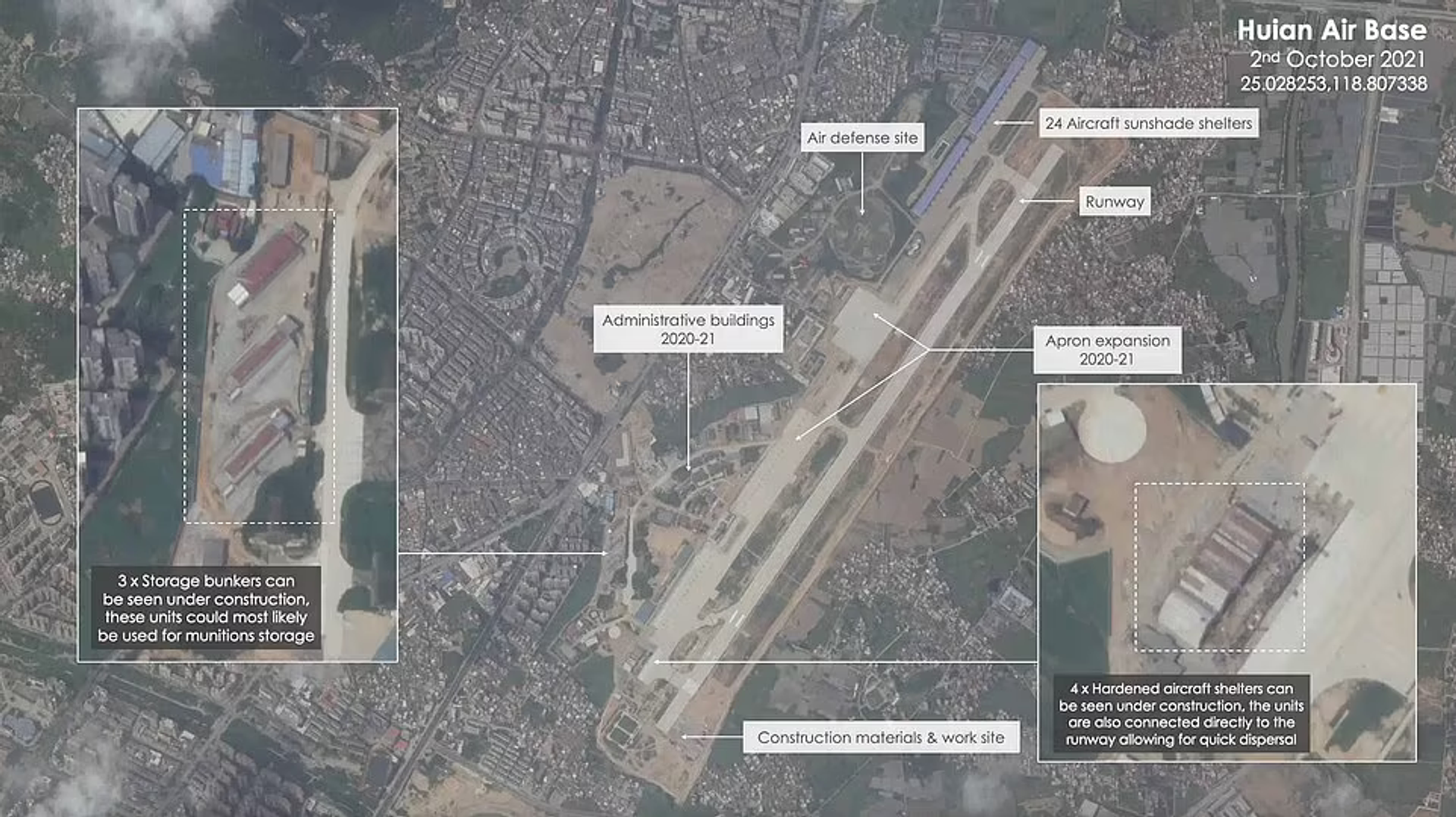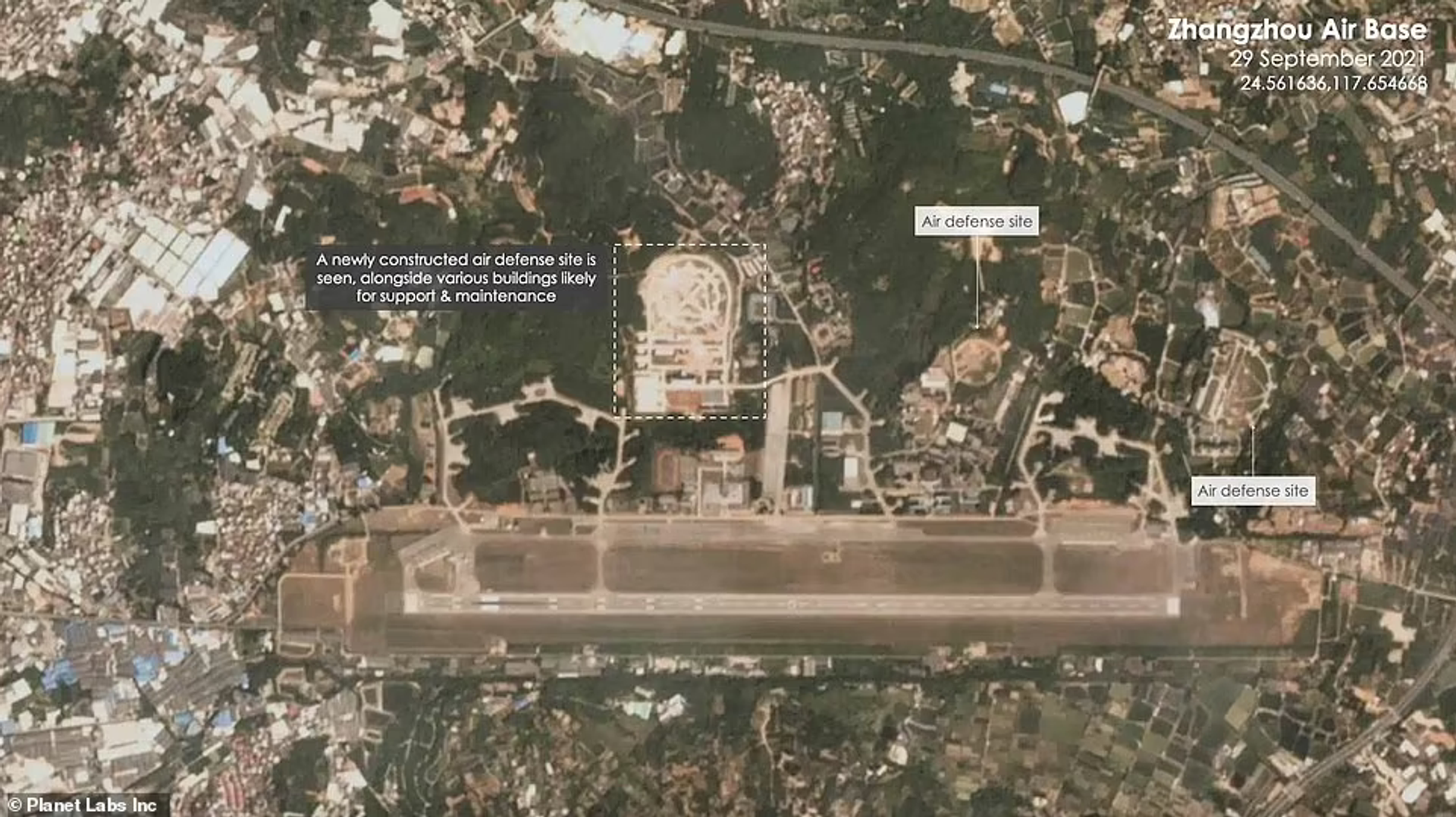https://sputnikglobe.com/20211015/china-engaging-in-major-construction-at-airbases-near-taiwan-satellite-snaps-appear-to-show-1089956459.html
China Engaging in Major Construction at Airbases Near Taiwan, Satellite Snaps Appear to Show
China Engaging in Major Construction at Airbases Near Taiwan, Satellite Snaps Appear to Show
Sputnik International
The People’s Republic considers Taiwan an integral part of China, and has set a course for the island’s eventual peaceful reunification with Beijing. Recent... 15.10.2021, Sputnik International
2021-10-15T18:57+0000
2021-10-15T18:57+0000
2023-12-20T12:17+0000
china
tensions
taiwan
military base
https://cdn1.img.sputnikglobe.com/img/105603/88/1056038821_0:140:4000:2390_1920x0_80_0_0_75721cb399b3e336c169f86d43a1dd77.jpg
The People’s Liberation Army is overseeing major upgrades to three of its airbases near Taiwan, satellite snaps taken by private Earth imaging company Planet Labs and analyzed by US media suggest.The images, first published by The Drive, appear to show that the airbases in Longtian, Huian and Zhangzhou – all of them originally built during the Cold War, have witnessed major construction starting in early 2020.Huian Airbase, meanwhile, has seen construction including minor runway extensions, an expansion of runway aprons, storage bunkers and four bombproof aircraft shelters.Finally, the Zhangzhou Airbase appears to be getting its third dedicated surface-to-air (SAM) missile site to assure air defence.In spite of the upgrades, the aircraft being operated at the three bases appear to be the same as before, consisting of fighters, fighter-bombers, bombers and reconnaissance aircraft. China is known to have deployed aircraft operating from these and other bases regularly in its flights near Taiwan, including through the island’s so-called air defence identification zone (ADIZ), which covers Taiwan itself plus part of the Chinese provinces of Fujian, Zhejiang and Jiangxi. The People’s Republic does not recognize the legitimacy of the ADIZ and flies its aircraft into and out of the area at will despite protests from Taipei.Taiwan TensionsThe new information regarding the apparent scale of the Chinese military’s upgrades of bases near Taiwan comes amid a fresh round of tensions between Beijing, Taipei and its Washington allies following last week's revelations that two dozen US troops have been secretly stationed in Taiwan to train local forces – an activity that’s potentially illegal under agreements and informal understandings reached between China and the United States on the Taiwan issue.China’s Global Times newspaper dared the US to deploy ten times more troops than the number revealed to be present to see “whether the PLA will launch a targeted air strike to eliminate those US invaders!”Earlier this month, Taiwanese Defence Minister Chiu Kuo Cheng warned that tensions between Taipei and Beijing had reached highs unseen in decades, and claimed that the mainland could launch an all-out invasion by 2025. The US State Department has stressed Washington’s “rock solid” commitment to Taiwan, and accused the PRC of “provocative military activity” in areas surrounding the island.Beijing has long maintained that it expects reunification to be peaceful. Last Friday, President Xi Jinping, who has made the Taiwan issue a key plank of his agenda, pledged that reunification would “definitely” be implemented. “To achieve the reunification of the motherland by peaceful means is most in line with the overall interests of the Chinese nation, including our compatriots in Taiwan,” he stressed.The escalation of tensions in the region comes despite an apparent commitment by President Joe Biden to Xi in a phone call last month not to alter Washington’s commitment to the One-China Policy – under which the US formally recognizes the PRC as the one true China.Since coming to power in 2016, Taiwan’s current government, led by Tsai Ing-wen and the liberal left Democratic Progressive Party, has regularly sparked Beijing's wrath thanks to its staunchly pro-independence, anti-reunification stance, and attempts to shore up relations with the US via arms deals and a range of diplomatic offensives.Taiwan, which officially calls itself the ‘Republic of China’, broke off relations with the People’s Republic in 1949, following the defeat of nationalist forces by the communists in the Chinese Civil War. The two ‘Chinas’ spent several decades claiming that they were the sole true China, with the United Nations recognizing the PRC as the one and only legal China in 1971. The United States agreed to recognized the People’s Republic as such in 1979, when formal diplomatic relations between Beijing and Washington were established. In the 1980s and 1990s, Taiwan’s longtime ruling party – the nationalist Kuomintang, moved to improve relations with the PRC, with economic ties strengthened and informal diplomatic links forged. Unlike the Democratic Progressives, the Kuomintang generally agrees to the idea of eventual peaceful reunification with the mainland under the One Country, Two Systems applied to Hong Kong following its 1997 handover to Chinese jurisdiction by the UK.
https://sputnikglobe.com/20211007/chinese-journo-denounces-us-invaders-amid-news-of-secret-special-forces-training-on-taiwan-1089749963.html
https://sputnikglobe.com/20211009/chinas-reunification-with-taiwan-will-definitely-be-fulfilled-xi-jinping-says-as-tensions-grow-1089788152.html
china
taiwan
Sputnik International
feedback@sputniknews.com
+74956456601
MIA „Rossiya Segodnya“
2021
News
en_EN
Sputnik International
feedback@sputniknews.com
+74956456601
MIA „Rossiya Segodnya“
Sputnik International
feedback@sputniknews.com
+74956456601
MIA „Rossiya Segodnya“
china, tensions, taiwan, military base
china, tensions, taiwan, military base
China Engaging in Major Construction at Airbases Near Taiwan, Satellite Snaps Appear to Show
18:57 GMT 15.10.2021 (Updated: 12:17 GMT 20.12.2023) The People’s Republic considers Taiwan an integral part of China, and has set a course for the island’s eventual peaceful reunification with Beijing. Recent efforts by the Biden administration to forge closer ties with Taipei have sparked outrage in China, and warnings from Chinese media of storm ‘clouds gathering’ over the Taiwan Strait.
The People’s Liberation Army is overseeing major upgrades to three of its airbases near Taiwan, satellite snaps taken by private Earth imaging company Planet Labs and analyzed by US media suggest.
The images, first published by
The Drive, appear to show that the airbases in Longtian, Huian and Zhangzhou – all of them originally built during the Cold War, have witnessed major construction starting in early 2020.
The satellite snaps show that the bases, situated between about 160 and 300 km of the Taipei metropolitan area, are getting a variety of upgrades. This includes suspected munitions bunkers, new runway aprons, and four hardened aircraft structures at Longtian Airbase, plus new administrative buildings and what appears to be a barracks at the military facility.
Huian Airbase, meanwhile, has seen construction including minor runway extensions, an expansion of runway aprons, storage bunkers and four bombproof aircraft shelters.
Finally, the Zhangzhou Airbase appears to be getting its third dedicated surface-to-air (SAM) missile site to assure air defence.
In spite of the upgrades, the aircraft being operated at the three bases appear to be the same as before, consisting of fighters, fighter-bombers, bombers and reconnaissance aircraft. China is known to have deployed aircraft operating from these and other bases regularly in its flights near Taiwan, including through the island’s so-called air defence identification zone (ADIZ), which covers Taiwan itself plus part of the Chinese provinces of Fujian, Zhejiang and Jiangxi. The People’s Republic does not recognize the legitimacy of the ADIZ and flies its aircraft into and out of the area at will despite protests from Taipei.
The new information regarding the apparent scale of the Chinese military’s upgrades of bases near Taiwan comes amid a fresh round of tensions between Beijing, Taipei and its Washington allies
following last week's revelations that two dozen US troops have been secretly stationed in Taiwan to train local forces – an activity that’s potentially illegal under agreements and informal understandings reached between China and the United States on the Taiwan issue.
China’s Global Times newspaper dared the US to deploy ten times more troops than the number revealed to be present to see “whether the PLA will launch a targeted air strike to eliminate those US invaders!”
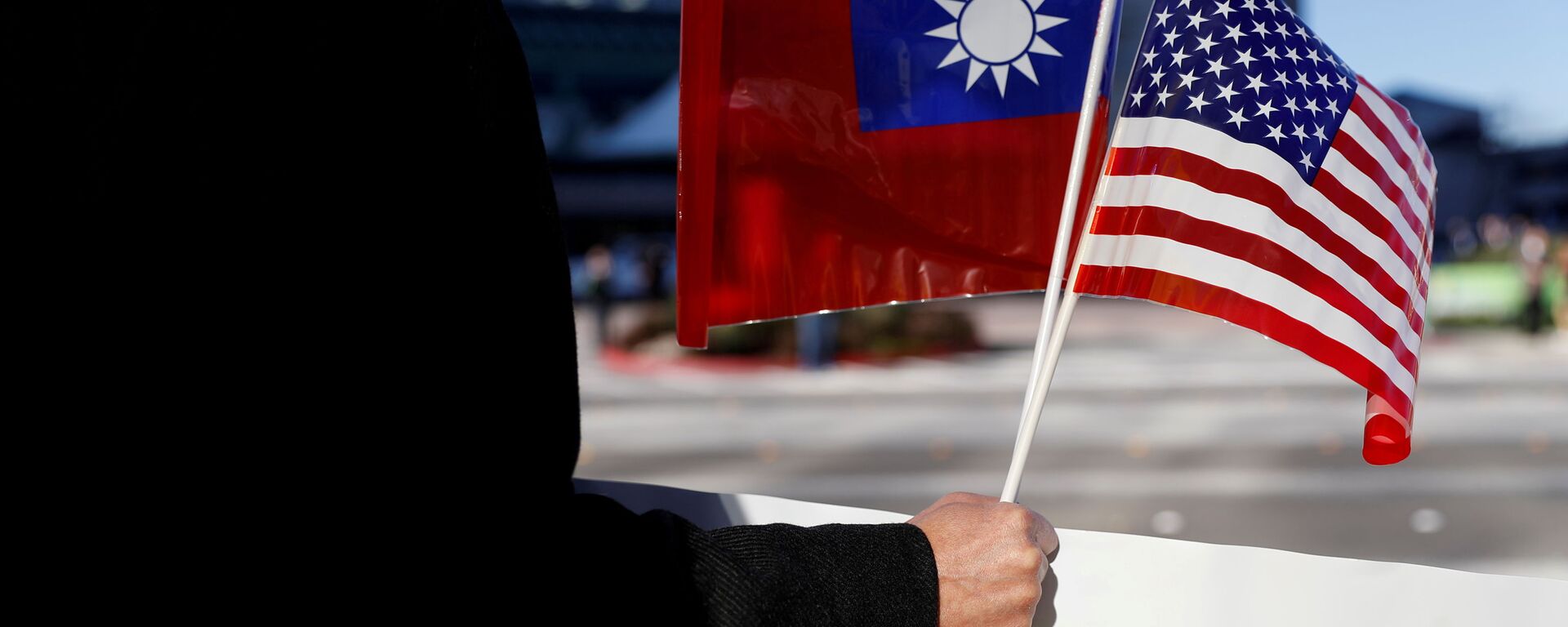
7 October 2021, 19:57 GMT
Earlier this month, Taiwanese Defence Minister Chiu Kuo Cheng warned that tensions between Taipei and Beijing had reached highs unseen in decades, and claimed that the mainland could launch
an all-out invasion by 2025. The US State Department has stressed Washington’s
“rock solid” commitment to Taiwan, and accused the PRC of “provocative military activity” in areas surrounding the island.
Beijing has long maintained that it expects reunification to be peaceful. Last Friday, President Xi Jinping, who has made the Taiwan issue a key plank of his agenda,
pledged that reunification would “definitely” be implemented. “To achieve the reunification of the motherland by peaceful means is most in line with the overall interests of the Chinese nation, including our compatriots in Taiwan,” he stressed.
The escalation of tensions in the region comes despite an
apparent commitment by President Joe Biden to Xi in a phone call last month not to alter Washington’s commitment to the One-China Policy – under which the US formally recognizes the PRC as the one true China.
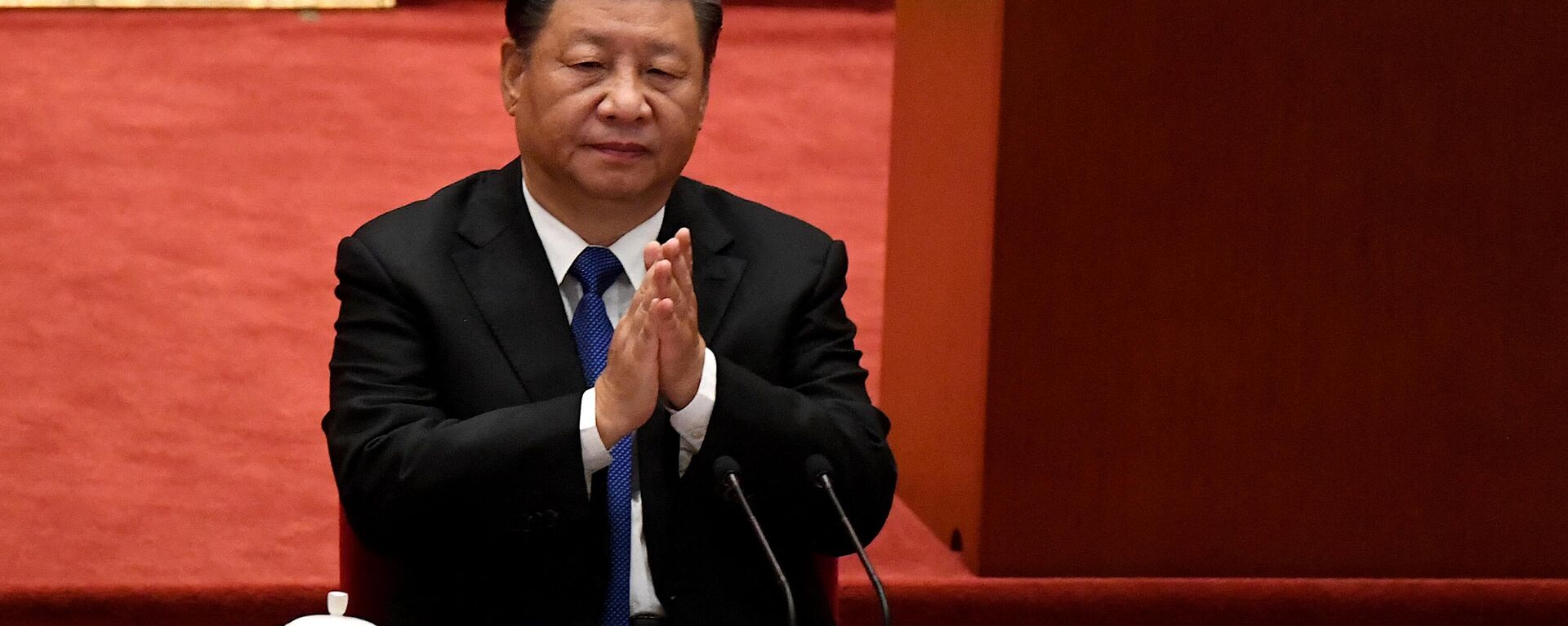
9 October 2021, 08:27 GMT
Since coming to power in 2016, Taiwan’s current government, led by Tsai Ing-wen and the liberal left Democratic Progressive Party, has regularly sparked Beijing's wrath thanks to its staunchly pro-independence, anti-reunification stance, and attempts to shore up relations with the US via arms deals and a range of diplomatic offensives.
Taiwan, which officially calls itself the ‘Republic of China’, broke off relations with the People’s Republic in 1949, following the defeat of nationalist forces by the communists in the Chinese Civil War. The two ‘Chinas’ spent several decades claiming that they were the sole true China, with the United Nations recognizing the PRC as the one and only legal China in 1971. The United States agreed to recognized the People’s Republic as such in 1979, when formal diplomatic relations between Beijing and Washington were established. In the 1980s and 1990s, Taiwan’s longtime ruling party – the nationalist Kuomintang, moved to improve relations with the PRC, with economic ties strengthened and informal diplomatic links forged. Unlike the Democratic Progressives, the Kuomintang generally agrees to the idea of eventual peaceful reunification with the mainland under the One Country, Two Systems applied to Hong Kong following its 1997 handover to Chinese jurisdiction by the UK.
